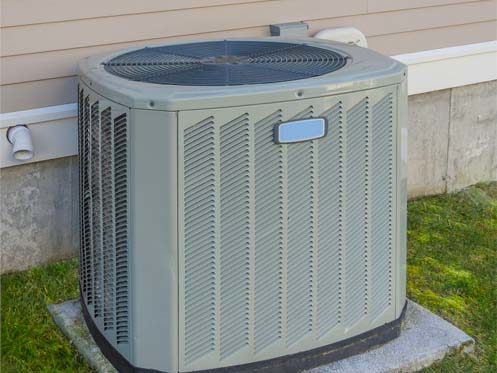what is a multi zone hvac You may have seen information in the media about multi-zone HVAC systems. These types of comfort systems can help bridge the gaps in rooms that stay too warm or too cold using your typical central air conditioning unit. There are a few different ways to create such a multi-zone system. Which way is best depends upon factors regarding layout of your home and your existing HVAC unit.
What Is a Multi-Zone HVAC?
Very simplistically, a multi-zone HVAC system utilizes either multiple units or baffles in ductwork to provide more targeting of cooling and heat in one or more rooms in your home. This helps with situations like a living room that gets too hot in the summer due to larger, south-facing windows. Another common use case for multi-zone HVAC is when you have two stories. The top story is likely also warmer than the rest of your home in summer. Sometimes, a room on the north side of the house is like an icebox in winter.
There are three different ways to accomplish a multi-zone comfort system.
1. Zoned HVAC Conversion From Existing Central Air
If you already have an existing central air conditioning system, the best way to achieve a multi-zone comfort system is to add baffles to the existing ductwork. Converting your existing central system is a good choice when your home has larger rooms or an open floor plan.
We work with you to decide how you can best choose to divide your home into zones of heating and cooling. Usually, upstairs and downstairs need to be different zones due to their different natural temperatures. You can also make living zones separate from sleeping zones to save energy.
Dampers placed in the ductwork control how much heating or cooling gets to each zone. The zones each have their own thermostat, allowing you greater control over zone temperature. A main control panel receives signals from each zone’s thermostat and then opens and closes dampers to achieve just the right temperature.
There are also manual zone systems that require the homeowner to manually close off dampers as needed. These are less expensive options to achieve zone control. They do, though, have the disadvantage of having only one thermostat in a central location.
In order to overcome air pressure issues that are created by dampening off portions of the ductwork in a central air system, air bypasses and larger ducting is used in certain parts of the system. Air pressure issues reduce energy efficiency by creating pressure imbalances in the air conditioning system. This is also why it is advised that people not simply close vents off to rooms to create zone control. This creates mismatches in pressure in your central air system. That can make the system work harder than it has to, reducing your energy efficiency. Potentially, it can reduce the life of your system over time.
If you have an older air conditioning unit that is 15 or more years of age, you might want to consider purchasing a newer unit when you use this method of multi-zoned air conditioning. Older units of that vintage tend to have a SEER rating of only 8 or 9. A new unit sold in Texas today must, by federal law, be at least 14 SEER. Most new central air units sold today are 15 to 25 SEER. This will save you quite a bit of money on your cooling bill during the warmer months.
In terms of a newer unit, one with a variable-speed or multi-speed condenser and fan will work in harmony with your multi-zone system by only permitting the cooling throughput and airflow that the system is requiring to meet the settings of the thermostats in the zones. This will allow your multi-zone system to save you more money on your energy bill. Another money-saving possibility is turning the cooling in the sleeping rooms off or down during the day. We can also provide such a multi-zoned, central air system for a new home installation as well.
2. Zoned HVAC Using Mini Splits
For homes that have smaller rooms, mini splits are incredibly energy efficient. They are different from central air in that there is an outside unit and inside units, or heads, in each room or zone. There is no ductwork. There is only a three-inch diameter line that goes from the outer unit to the inner units. This small line only supplies power, refrigerant and a means of removing condensation to the outdoors. These are also known as ductless air conditioning systems.
Each head has its own thermostat, providing you with the targeted zoning of heating or cooling in each room or zone you choose. Mini-splits have a SEER rating of around 30, compared to most new central air conditioning units with a SEER of 14 to 20.
The reason for the efficiency of mini-split systems is their variable-speed compressors. They operate at only the speed needed to keep the room at your desired temperature. This is different from the central air units in most homes that operate at only high or off because they are single-speed. Also, mini splits have AC-to-DC inverter technology that saves on unit electricity usage. All of that energy efficiency will save you quite a bit of money on your energy bill during a Texas summer.
The limitation here is that houses with large rooms or open floor plans cannot efficiently run on mini splits because you need multiple units in larger rooms. Each head does not have the BTU cooling output to cool a larger room by itself. These units are best placed in smaller homes with well-defined rooms. An amazing feature of mini splits is you can be simultaneously heating one room while cooling another.
3. Hybrid Multi-Zone HVAC Using Your Existing Central Air and Mini Splits
For homes with existing central air, some opt to add mini splits to provide extra cooling and/or heating to rooms or areas not served by the ductwork or to a trouble spot that needs more help. This is far more energy efficient than raising or lowering the thermostat for the whole house to accommodate one room. Each mini split head has its own thermostat.
There are some places where you might consider adding a mini-split into duty with your central air conditioning.
- Garage
- Chilly bedroom
- Finished basement
- Attic
- Workshop
- Office
- New addition
Each of these places will have the benefit of a different thermostat to set. It will also have the benefit of top energy efficiency with a rating of 30 SEER.
Call the Experts at Dring Air Conditioning & Heating in Carrollton for All of Your HVAC Needs
Properly sizing a heating and cooling system to meet the needs and demands of your house is a job for the experts. Here at Dring Air Conditioning & Heating in Carrollton, we serve the Dallas-Fort Worth Metroplex area and have been here since 1953. We provide heating and cooling system installations, repairs and maintenance as well as indoor air quality services. For repairs, we have 24/7 service to get your home back to comfort levels quickly. We stock many repair parts. We provide free estimates on repairs as well as free indoor air quality audits.
We are BBB A+ rated and have received the Carrier Distinguished Dealer Award.
Call us today for a home inspection regarding multi-zone HVAC systems at Dring Air Conditioning & Heating in Carrollton.







